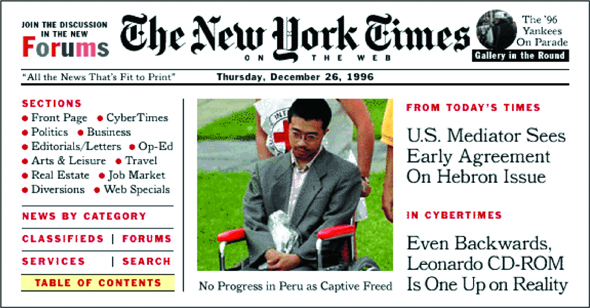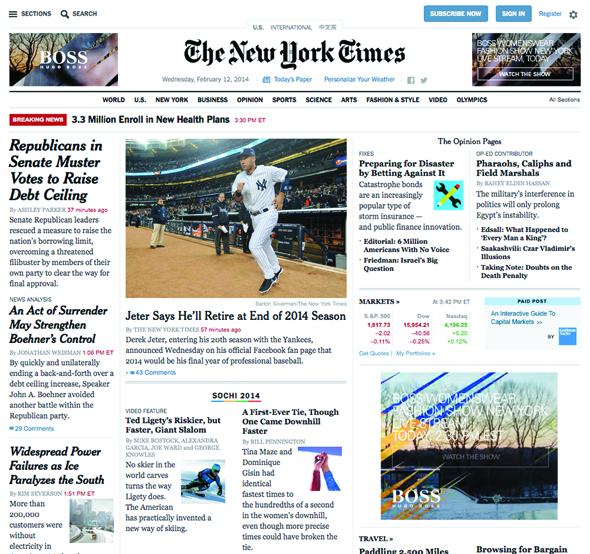

In January, The New York Times introduced the first visual overhaul of its site since 2006. The changes are fairly subtle–a cleaner look, section navigation that requires an extra click, articles that are easier to browse. But the redesign wasn’t about the visible so much as the possible. The new version blends every medium into one experience, whether it’s the written word, photographs, video, or a graphic. And it allows for a deeper integration of the Times’ beefed-up native advertising efforts, where ads are formatted to mimic a site’s editorial content. Journalism with a “play” button and ads that look like journalism–such is the digital mishmash on screens where every inch of real estate fights to hold audiences and no two users want the same thing.
This redesign also marks the 18th anniversary of the Times‘ original website launch. The debut homepage in 1996 announced, “The New York Times on the Web” and then underneath the masthead, “All the News That’s Fit to Print.” The Times online was a pixelated version of the paper. On the left was a static index of print-centric sections. There were no blogs, no comments from readers–none of today’s interplay between institution and audience. Words were the towering medium, photos were modestly sized, and the message to readers was top-down and clear: The Web isn’t so much a new medium as it is a new way to experience the old one.
Alas, Times have changed. Today’s screens–smartphones and tablets–aren’t just small computers, they are our precious sidekicks, our ubiquitous connectors to people, information, and news. We’re able to talk back and be heard, which means that the sort of one-way preaching tableau of 1996 would no longer fly. The public has found its voice.
So The New York Times circa 2014 has liveblogs and crowdsourcing, Twitter feeds and frequent updates–it’s journalism, all the time, across platforms. It informs and entertains and, yes, works harder to capture our attention. And while that interplay marks a shift from journalism’s past, shifting toward relevance isn’t a bad thing.

